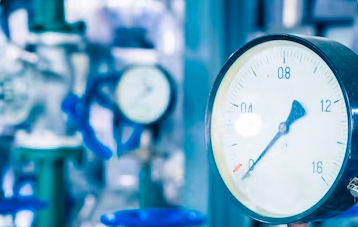Waste and storm water systems play a crucial role in the efficient management of wastewater and stormwater runoff. To ensure the optimal functionality of these systems, it is essential to detect any leaks or issues that may arise. One effective method for identifying such problems is through air test services. In this blog, we will explore what air test services are and how they are used to detect leaks and issues in waste and storm water systems.
Understanding Air Test Services
Air test services involve the use of pressurized air to identify leaks or issues in waste and storm water systems. This method utilizes the principle that air, when injected into the system, will escape through any openings or weaknesses, thus indicating the presence of leaks or defects. By pressurizing the system and monitoring the air pressure, technicians can pinpoint the exact locations of leaks or areas where issues may exist.
The Process of Air Testing
The process of air testing in waste and storm water systems typically involves the following steps:
Preparation: Before conducting an air test, the system must be properly prepared. This includes closing off all outlets, such as drains and connections, and sealing any potential openings or access points.
Pressurization: Once the system is prepared, air is introduced into the system through a designated access point. The air is gradually pressurized to a specific level, typically determined based on the system’s design and specifications.
Monitoring: As the system is pressurized, technicians closely monitor the air pressure. Any significant drop in pressure indicates the presence of leaks or defects within the system. By analyzing the pressure changes, technicians can identify the approximate location of the issues.
Leak Detection: To identify specific areas of leakage, technicians may employ various techniques such as using sensitive instruments to listen for escaping air, applying soapy water to potential leak points and observing for bubbles, or utilizing smoke tests to visually detect air movement.
Issue Assessment: Once leaks or issues are detected, technicians assess their severity and determine the necessary repairs or remediation measures. This may involve repairing or replacing damaged components, reinforcing weak areas, or addressing any structural deficiencies.
Benefits of Air Test Services
Air test services offer several benefits when it comes to detecting leaks and issues in waste and storm water systems:
Accurate Detection: Air test services provide precise and reliable detection of leaks and issues. By pressurizing the system and monitoring the air pressure, technicians can identify even the smallest leaks or defects that may not be immediately visible.
Cost-Effective: Detecting and repairing leaks or issues in their early stages is more cost-effective than dealing with significant damage or system failures later on. Air test services enable early detection, allowing property owners to address problems promptly, minimize potential damage, and avoid costly repairs or replacements.
Efficient Problem Resolution: Once leaks or issues are identified through air testing, technicians can efficiently address them. By pinpointing the exact locations of leaks or weak areas, repairs can be targeted, minimizing disruptions to the system and surrounding infrastructure.
Limitations and Considerations
While air test services are highly effective for detecting leaks and issues in waste and storm water systems, it is important to consider certain limitations:
System Compatibility: Not all waste and storm water systems are suitable for air testing. Some systems may have design characteristics or components that make air testing impractical or ineffective. It is crucial to consult with professionals experienced in air testing to determine the suitability and potential limitations of this method for specific systems.
System Condition: Air test services may not be suitable for systems that are severely damaged or in poor condition. Before conducting an air test, it is important to ensure that the system is structurally sound and capable of withstanding the pressure applied during testing. In such cases, alternative methods or repairs may be necessary before air testing can be conducted.
Conclusion
Air test services provide an effective and efficient method for detecting leaks and issues in waste and storm water systems. By utilizing pressurized air and monitoring the resulting pressure changes, technicians can accurately identify leaks or weak areas within the system. This enables prompt repairs, minimizing damage and costly repairs down the line. While air test services have limitations and considerations, their benefits in terms of accurate detection and cost-effectiveness make them a valuable tool in maintaining the functionality and integrity of waste and storm water systems. Consulting with experienced professionals in air testing can ensure the proper application of this method and help property owners address any identified issues promptly and effectively.

